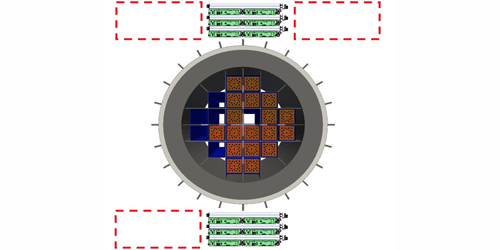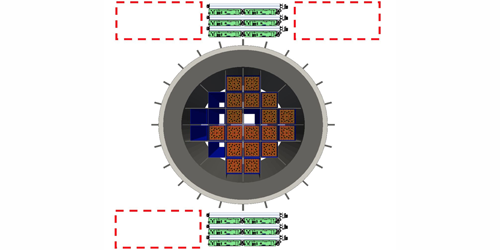Muons for Nuclear Waste Inspection
Waste nuclear-fuel rods are typically stored in 3-m-diameter steel casks that hold between 20 and 30 fuel-rod bundles. But once a cask is sealed, there is no way to check how many bundles are inside or, importantly, whether any are missing, without opening it. Now J. Matthew Durham of Los Alamos National Laboratory, New Mexico, and colleagues have shown that this problem can be solved by monitoring the paths of cosmic-ray muons passing through a cask. They say that International Atomic Energy Agency inspectors could use the method to verify that nuclear fuel isn’t being diverted from nuclear storage facilities.
The method involves placing muon detectors on opposite sides of a storage cask and tracking the trajectories of muons that pass through the casks. Muons easily penetrate the thick outer layers of the casks, and their trajectories are particularly affected by the presence of heavy elements like plutonium. The team tested their method on a cask housed at Idaho National Laboratory, which contains 24 storage holes for fuel-rod bundles, of which six are empty.
Previous measurements by the team hinted that the muons’ scattering angle was sensitive to missing rods. But the measurements were made on too small an area of the cask to be conclusive. In the new experiments, the team made measurements over the whole cask, placing the detectors in nine different configurations. They confirmed their earlier result and showed that they could pinpoint sections of the cask that had at least two missing fuel bundles. The team says that increasing the measurement time or using larger detectors that catch more muons could make the method sensitive enough to spot a single missing bundle.
This research is published in Physical Review Applied.
–Katherine Wright
Katherine Wright is a Contributing Editor for Physics.





